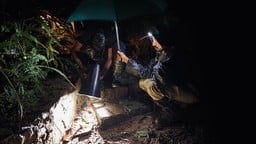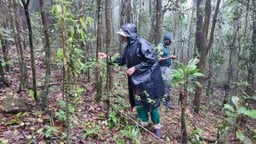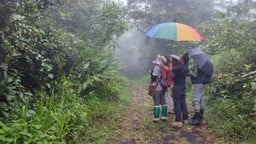- 18 October 2025
A Glimpse into the Wild: Restoring a Montane Forest in Sri Lanka
The dedicated team at Ceylon Tea Trails has been nurturing a vision since 2020: to restore 11.6 acres of degraded land at the Dunkeld Estate into a thriving montane forest. This year, their mission has gained new momentum through a collaboration with the experts at Dilmah Conservation, whose knowledge and expertise are now guiding the project.
This ambitious endeavour began with a comprehensive biodiversity study, a crucial first step in understanding the land’s potential. The survey focused on key groups of life, from birds and mammals to amphibians and flowering plants.
The findings of this initial assessment were a cause for celebration. The study revealed the presence of an incredible 29 endemic species—creatures found nowhere else on Earth. These discoveries highlight the site’s immense value as a conservation haven. The list of endemic life includes:
- Amphibians: 11 species, such as the unique Kirthisinghe’s Rock Frog.
- Reptiles: 12 species, including the striking Endemic Kangaroo Lizard.
- Fish: 3 species, with the distinctive Sri Lankan Snout-Nosed Garra.
- Birds: 2 species, the beautiful Sri Lanka Whistling Thrush and the Sri Lanka Bush Warbler.
- Butterflies: The delicate Blue Oakleaf.
The report also identified several species with important conservation statuses, including:
- Vulnerable Species: Lanka Tree Frog, Kirthisinghe’s Rock Frog, Endemic Kangaroo Lizard, Sri Lankan Snout-Nosed Garra, Sri Lanka Whistling Thrush, Sri Lanka Bush Warbler, Indian Spotted Chevrotain, Yellowish Snout-Moth, and the Garcinia quaesita (Goraka) plant.
- Near Threatened Species: Tawny-bellied Babbler, and the plant Impatiens leucobracteata.
- Endangered Species: The plant Osbeckia hispidissima.
With this vital information in hand, the project is now ready for its next phase. The insights from the study will be used to guide the implementation of restoration efforts, ensuring the new forest becomes a flourishing and permanent home for its precious native species.

Extended Stay Savings
Extend your stay for 6+ nights at Cape Weligama, save more and enjoy the holiday of a lifetime.



















